- in Addiction , Mental Health by Tony
- |
- 1 comments
Psychedelics on the Couch
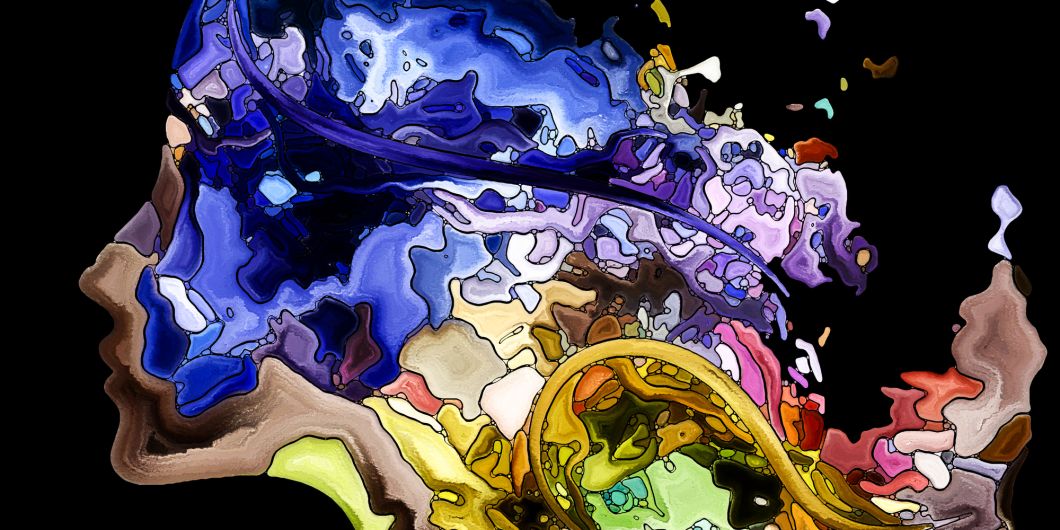
The term “psychedelic” is derived from the Ancient Greek words “psyche” (meaning “mind”) and “delos” (which means “to manifest”). The British-born Canadian psychiatrist Humphry Osmond coined it in a letter to author Aldous Huxley in 1956.
More...
Psychotropic medication definition. Is any drug prescribed to stabilise or improve mood, mental status, or behaviour?
It’s an umbrella term for many different medications, including prescription and commonly misused drugs
If you want to discuss the benefits of psychedelic drugs, then according to McKenna’s 1992 book on Food of The Gods. He proposed the Stoned Ape Hypothesis. He explained that ingesting psychedelic plants may have encouraged social bonding and consciousness, responsible for doubling the brain capacity of our ancestors two million years ago.
Unfortunately, it is only a theory with very little proof or support at this time. There’s possibly some truth in what McKenna enunciates, said the palaeontologist Dr Martin Lockley, author of a book called How Humanity Came Into Being.
However, perusing this theory and being an optimist, could our village coke head be the next Einstein.
On the other hand, research has shown that psychedelics may genuinely spark the creation of new neurons and synapses, a process known as neurogenesis within the Petri dish at the moment.
Perhaps in the future, treatments for neurodegenerative diseases like dementia could stimulate the formation of new neurons without sending patients on any mind-bending cosmic adventure.
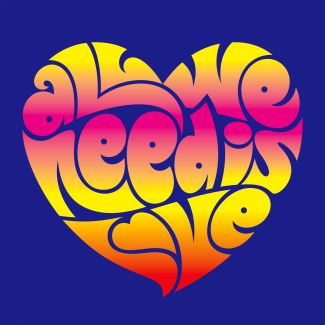
For the baby boomers among us, a psychedelic experience is somewhat déjà vu, sending you back to the summer of love.
It is indeed a trip down memory lane for some (pun intended). Still, it doesn’t mean it’s all a bed of roses, and it’s no exaggeration that these substances can harm in the wrong hands or be abused.
Albeit a popular and mainstream topic for generations, it has been immortalised in history books, folk law and music with positive and negative correlations.
Psychoactive substance
A psychedelic drug is a psychoactive substance whose primary action is to produce hallucinations or other sensory distortions, with secondary effects that are either less prominent or more desirable.
Because of this dual action, the correct term for these drugs is entactogens (entheogens if the primary product is spiritual). Psychedelics include a variety of hallucinogenic compounds like LSD, mescaline and primarily act on the serotonergic system in the brain.
Psilocybin causes visual and mental distortions, such as dysphoria, stress, and anxiety. While amphetamines like cocaine, crystal meth, ketamine and MDMA cause feelings of euphoria.
Phencyclidine, also known as PCP or angel dust, is an NMDA antagonist and induces symptoms that can mirror those observed in schizophrenia.
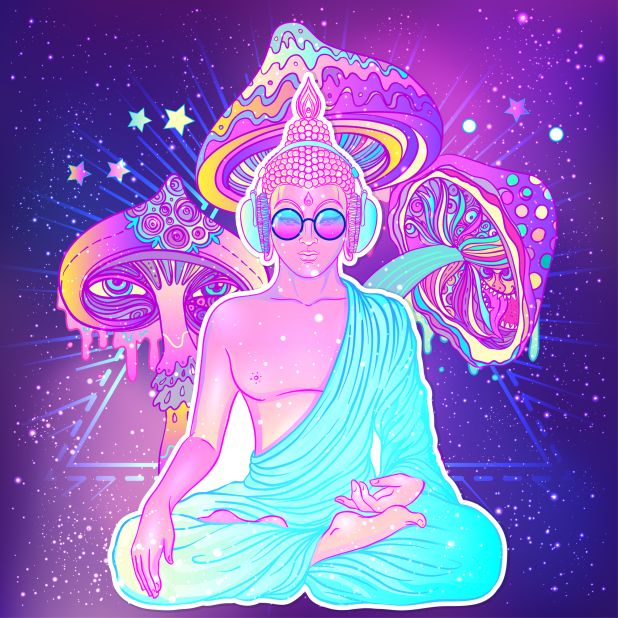
The use of psychedelic drugs goes back thousands of years, with one of the earliest recorded uses by the Shamanic peoples in Mexico, who used these substances to induce visions of mystical beings and make contact with spiritual powers.
In North America, psychedelic drugs have been used for religious purposes, such as during a Native American sweat lodge ceremony. Many people report having profound spiritual experiences while under their influence, which helps explain why they are used so commonly in religious ceremonies throughout history across numerous cultures around the world, intended to create a connection with greater consciousness beyond oneself.
The use of psychedelics for recreational purposes has become more common since the early 20th century and can be traced back to the Jazz culture.
The 1960s saw the beginning of widespread experimentation with LSD, then peaking in popularity in the 1970s by old hippies, followed by a generation of New Age hallucinogenic enthusiasts in the club scene and “rave movement” with Special K.
Today, many types of psychedelic drugs are being researched around the World, as they still hold great promise in psychiatry and medicine.
Therapeutic Practice
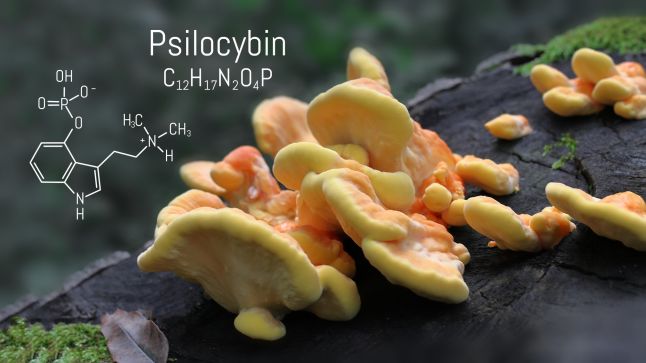
Most of you already have some knowledge and opinion of psychedelics from their therapeutic clinical trenches. In my case, a neighbour had been offered magic mushrooms from the local watering hole, and he then decided to forage for his own organic free supply in the local woods.
Unfortunately, he didn’t know the difference between a mushroom and a toadstool. The only trip he had was by ambulance to the accident and emergency room, and these fungi weren’t editable. Having chosen the poisonous species, he died after a week on life support, leaving a young wife and two young children behind.
The distinguished neurologist and writer Oliver Sacks wrote about his own experiences and other people’s hallucinations in his book. His experimentation began in 1962, as he was starting his neurology residency in San Francisco.
Recalling how, once, he hallucinated that two friends had come over to visit. He didn’t realise his imaginary friends had lost their appetite and disappeared just as he finished cooking them breakfast.
Minutes later, he thought a helicopter was landing in his roof. He then found himself discussing mathematical paradoxes with a spider.
The late Oliver Sacks kept up his drug use for four years until a chloral hydrate withdrawal sent him into a 96-hour hallucination — and he never retook amphetamines again.
Soon after this incident, he began writing books.
Do psychedelics actually make people more creative?
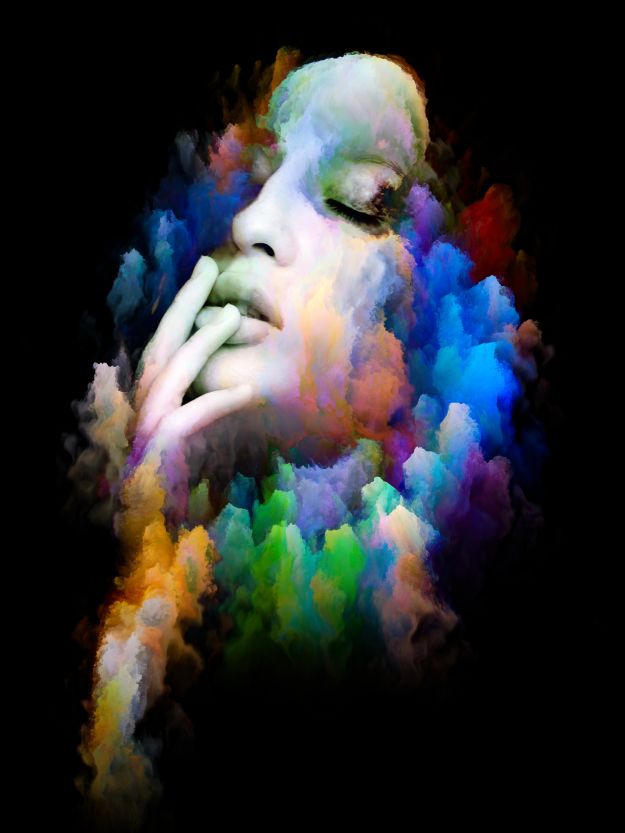
Psychedelics and creative genius have been linked throughout history. Anecdotal evidence comes from artists and musicians for influencing their work.
Natural-induced hallucinations experienced from their altered states of consciousness and certain psychiatric disorders could potentially increase feelings of insight and promote creativity.
Self-reports indicate that visual hallucinations were an essential source of inspiration for many artists. Some, like van Gogh, were involuntarily influenced by the changes of perception inherent in their psychological disorders (van Gogh 1889).
Joan Miro, who willingly induced hallucinations to draw creativity, having once said, “For me, an object is a living thing”.
Charles Dickens also believed that his Hypnagogic hallucinations, coupled with some sleep-inducing substances, such as alcohol, opium, or laudanum tincture. All were widely available in 19th-century England, had enhanced his creativity (Horne, 2016), and he was known for having used his dreams for his literary art.
The dreamlike mental state experienced was then disseminated in two of Dickens’ characters, Ebenezer Scrooge, being visited by the ghost of his former business associate Jacob Marley in his bedroom during A Christmas Carol.
Then the vulnerability of Oliver Twist, peacefully sleeping when Fagin and Monks located him through the open window.
In another example, physician and psychoanalyst John C. Lilly took his first hallucinogenic compound to help with his chronic migraine headaches.
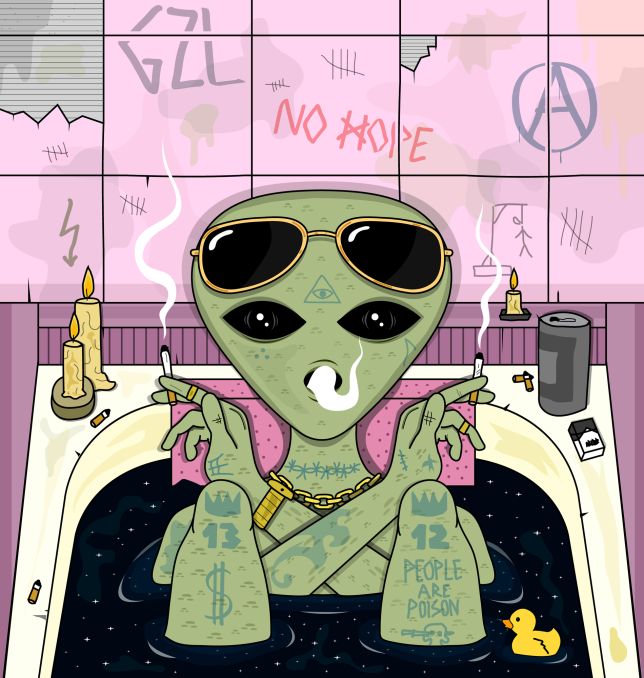
Lilly’s experience forms the basis of the novel and film played by John Hurt “Altered States” and also figures predominantly into two of Lilly’s most notable projects:
The invention of the isolation tank, which discovered that hallucinations could be spontaneously evoked in sensory deprivation tanks, which isolate participants from sensory input, and secondary when NASA-funded efforts to communicate with dolphins.
Late in his career, Lilly became obsessed with ketamine, injecting himself for days on end. He claimed that during these binges, he made contact with solid-state, extradimensional aliens distressed by humanity’s treatment of dolphins and other animals.
Even with the Beatles' clean-cut boy band image in the 60s, they were always surrounded by drugs. Even as early as 1961, the group had begun experimenting with amphetamines.
Later, in 1964, the band were formally introduced to marijuana by Bob Dylan who, after being left red-faced for thinking ‘I Want To Hold Your Hand’ included a reference to pot, offered the foursome their first joint. It was an experience that many have pointed to as a pivotal moment in the group’s career.
John Lennon explained in 1972 that Rubber Soul was considered the pot album and Revolver the acid. During the recording of Sgt. Pepper, McCartney would try cocaine, using it to keep his mind rigid and focused during sessions. The following album would see a darker turn as Lennon became addicted to heroin.
Speaking in 1994, Macca said of the track: I’d been a rather straight working class lad, but when we started to get into pot it seemed to me to be quite uplifting. It didn’t seem to have too many side effects like alcohol or some of the other stuff, like pills, which I pretty much kept off. I kind of liked marijuana and to me, it seemed it was mind-expanding, literally mind-expanding.
“So ‘Got To Get You Into My Life’ is really a song about that. It’s not a person, it’s actually about pot. It’s saying, ‘I’m going to do this. This is not a bad idea.’ So it’s actually an ode to pot.”
Lucy in the Sky with Diamonds is perhaps the most obvious reference to LSD, those within the band say otherwise. “I had no idea it spelt LSD,” Lennon confided in 1980.
In a research study by a Duch team, Dr Colzato and her PhD candidate Mikael Kowal are the first researchers to study the effects of cannabis use on creative thinking. They found that increased creativity is simply an illusion created by being high, and too much dope is actually counterproductive.
If you want to overcome writer’s block or any other creative gap, lighting up a joint isn’t the best solution.
In, anecdotal evidence suggests that cannabis intoxication enhances human creativity.
Even Steve Jobs, once stated: “The best way I could describe the effect of marijuana and, hashish, is that it would make me relaxed and creative.”
Maybe, we should conclude this section and give the Beatles the last word.
If you need help, to overcome writer’s block, or anything else, then With A Little Help From My Friends-is all you really need. The song suggests countless things that with a little help from your pals can be achieved, including the famous line “I get high, with a little help from my friends”.
The future of psychedelic drugs
Psychedelics were being used as medicines prior to 1971 when they essentially got caught up in the drugs war. In recent years, the resurgence of using psychedelic drugs to support mental health has become the new buzzword in the media and among medical professionals. Some recent documentaries, including Michael Pollan’s Netflix series How to Change Your Mind, explore the mental health benefits of psychedelics.

A public health campaign once famously claimed that drugs do nothing but turn users’ brains into fried eggs. However, a growing body of research suggests that psychedelics may help unscrambled the mind, significantly improving mental health.
It would appear that psychedelics have the potential to move the dial on conditions like depression and addiction. Yet, it is unclear whether healing is mediated by the psychedelic experience or by an increase in the brain’s ability to rewire after a trip.
What is depression
It has been suggested that Psychedelic-assisted therapy (PAT) represents one of the most promising developments in psychiatry in decades. It has the potential to help people living with treatment-resistant depression.
Currently, already legal for use in depression and other conditions, is ketamine (the anaesthetic). Used in the correct amounts and in the proper setting, low doses of ketamine may decrease suicidal ideation.
One of the most common benefits of psychedelic drugs is their ability to reduce stress and anxiety. These drugs can make users feel less anxious and more relaxed, allowing them to be more productive in their daily lives.
Psychedelic drugs are also a perfect way for those who suffer from depression or sleep disorders to help them feel better about themselves and see the beauty in life again.
322 million people worldwide live with depression (WHO)
The serotonin hypothesis of depression is still meaningful, even though it is over seventy years since antidepressives were first used, and it still continues today because it remains the keystone for depression.
The idea that depression is the result of abnormalities in brain chemicals, particularly serotonin, has been influential for decades, and provides an important justification for the use of antidepressants.
It can still take weeks for the medication to kick in, which is not always helpful. This medicine is also for life, however long that happens to be, with their elevated suicidal ideation. Even withdrawals from this medication can be tentative for most patients, with some unpleasant side effects. I know exactly what you are thinking; can’t live with them, and can’t live without them.
Depression affects one in six adults during their lifetime and is the top psychiatric disorders, and the social care costs for the illness are substantial. Finding a cure for this condition has been frustrating and elusive and the holy grail for most.
Approximately one-third of depressed patients are treatment-resistant to the currently available antidepressants.
There are alternative avenues of treatment for depression being explored, and not without their critics, to include psychotherapy, light therapy, exercise, repetitive transcranial magnetic stimulation, vagus nerve stimulation, electroconvulsive therapy, and finally, intravenous ketamine.
Drugs of choice
Ketamine
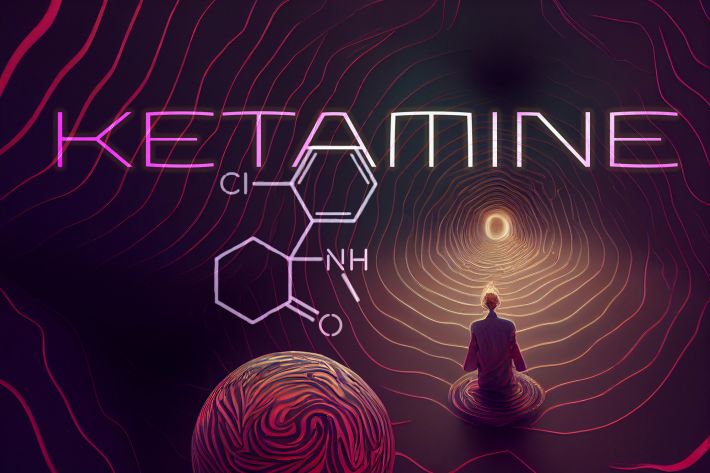
Ketamine was first synthesised by a Detroit chemist in 1962, and has been used as a combat zone anaesthetic, an emergency room painkiller and a surgical sedative for horses. And for decades, it has also been a recreational drug, embraced by trip-seekers from the counterculture to the club scene.
By the early 1970s, the drug known as “Special K,” among other street names, had found a foothold among the growing number of LSD and hallucinogenic enthusiasts.
Ketamine is defined as a Dissociative Anaesthetic due to its sedating effects, which produce an out-of-body experience where users feel detached from themselves and their surroundings.
The FDA is also considering more psychedelic substances in therapy, which are being studied with new vigour.
At extremely high doses, users have reported feeling as if a “near-death experience” known as the “K-hole,” is happening. Other users report that they experience a “state of utter bliss” on Ketamine.
Sometimes an overdose can occur after a small dose of Ketamine, especially if other drugs or alcohol have also been ingested. Many accidental overdoses occur when a user attempts to reach the “K-hole.”
Even after using Ketamine for a brief period of time, there is a high probability that a user will experience what is called a “comedown.” The comedown is a drug-induced equivalent to a hangover and can be intense and dangerous. Since Ketamine is designed as a Sedative, it is very likely for users to experience intense confusion and delirium.
Ketamine has also reportedly been used by sexual predators to incapacitate their intended victims (Date Rape).
Note: Ketamine can be addictive.
For physical and mental health, Colorado woman finds success with ketamine
Case study: After a car crash nearly six years ago left her with bouts of chronic neck pain, anxiety and depression, Allison Foley felt as though she had exhausted all her treatment options. Nothing worked.
Various medications, talk therapy and numbing agents seemed to put a bandage over the underlying issues, but the pain always bubbled to the surface when initial dopamine hits wore off.
After years of frustration, Foley spoke with a friend in California who used ketamine to cope with similar issues. Foley heard Colorado was introducing a similar program offering ketamine therapy and decided to give it a shot, feeling she had nothing to lose.
After three months of taking a small ketamine dose once a week at home, Foley said her life transformed.
The United States Food and Drug Administration classifies ketamine as a Class III substance, meaning it is legal for medical purposes in all 50 states.
Several practitioners in the Denver area prescribe ketamine. Foley obtains her treatment through Wondermed LLC, a platform that provides ketamine doses and therapy services to remote patients. Foley takes her dose once a week at her Denver home and meets with a clinician monthly to discuss progress. Because ketamine alters Foley’s mind, she takes it under the supervision of a close friend or family member, though she said she has never had any issues while under its influence.
“The experience is very calming,” Foley said. “It’s essentially like a warm hug.”
Foley said the ketamine helps her “step outside herself” and look at her anxious thoughts from an objective place, rather than being consumed by them.
“There’s a voice that can get louder or quieter depending on the day or depending on what I’m going through that can really disrupt my life,” Foley said. “This treatment has given me the opportunity to allow my true inner healer to step up and have a dialogue with that negative voice.”
The experience lasts about an hour, and Foley meditates, journals and processes her difficult emotions and memories without being consumed by them.
“It allows you to go to a deeper level of your subconscious and eliminate the anxiety that comes with working on a deeper level of yourself,” Foley said.
Lauren Swanson, a physician’s assistant and lead clinician with Wondermed, said ketamine differs from antidepressants and other psychedelic medications because it is fast-acting and grows new neural connections that change a person’s brain, allowing them to shift their perspective and cope with traumas or pain.
Methylenedioxymethamphetamine (MDMA)
methylenedioxymethamphetamine (MDMA) commonly seen in tablet form (ecstasy, E, or molly).
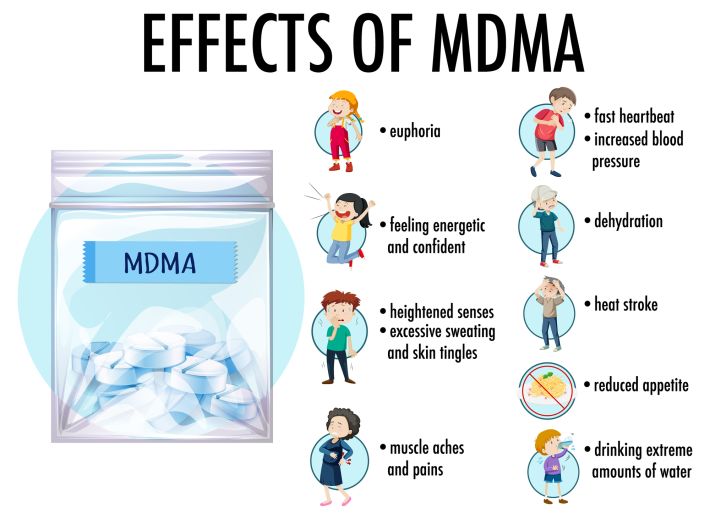
Ecstasy was developed as an appetite suppressant in 1912, but in the 1970s it started being used in therapy sessions in the US.
During the 1960s and 1970s, a few psychiatrists started giving MDMA to their patients as a way to facilitate psychotherapy. Although MDMA was not approved by the Food and Drug Administration (FDA), these doctors believed that it lowered their patients' inhibitions, causing them to talk more openly and honestly.
While MDMA is still on the list of Schedule I drug, studies are being conducted to see if it's effective in treating anxiety in people with a terminal illness, as well as those with post-traumatic stress disorder (PTSD).
From July 2023, Specifically authorised psychiatrists in Australia will be able to prescribe MDMA for post-traumatic stress disorder, and psilocybin for treatment-resistant depression.
MDMA is the active ingredient of the street drug ecstasy, or “Molly” is classified as a Schedule 1 illicit substance due to their perceived potential for abuse. Shortly after consumption, MDMA releases chemicals in the brain that tend to bring about a sense of euphoria, exhilaration and increased intimacy with others.
Molly - refers to the crystalline powder form of MDMA, usually sold as powder or in capsules. Some people mistakenly believe that Molly does not contain contaminants often found in ecstasy.
In fact, chemical analyses of drugs sold as Molly and seized by the U.S. Drug Enforcement Administration (DEA) have shown that they often contain other types of drugs and may not contain any MDMA.
In 2013 that substances being sold as Molly were actually methylone, a synthetic stimulant commonly found in bath salts.
It is a synthetic drug primarily used within a recreational setting. Ecstasy is commonly taken in nightclubs and at parties and is very often associated with extended sessions of dancing.
Ecstasy achieves its high by preventing the brain from reabsorbing the chemical serotonin, thereby prolonging its effects in the body.
However, the drug has been gaining attention for its potential therapeutic applications, particularly for the treatment of certain mental illnesses such as depression.
Researchers have shown it can also be used to treat post-traumatic stress disorder (PTSD) that has not responded to conventional medicines.
Post-traumatic stress disorder (PTSD) is a devastating psychiatric disorder afflicting millions of people worldwide. Characterised by severe anxiety, intrusive thoughts, and nightmares, and an elevated risk of suicide. MDMA, like classic psychedelics such as psilocybin, have been used to enhance the efficacy of psychotherapy almost since their discovery.
The therapeutic benefits, such helping those who struggle with PTSD by allowing them access to emotions they could not reach on their own before the therapy session or calming social anxiety in those seeking relief or help socially connecting with others without fear or apprehensions they may have had prior to treatment.
MDMA is an entactogen/empathogen, promoting increases in the release and inhibited reuptake of serotonin (5-HT) and norepinephrine, alongside the possible release of the neuropeptide oxytocin. With users typically reporting significant increases in subjective feelings of trust, empathy, sociability and personal reflection.
MDMA-mediated increase of brain-derived neurotrophic factor (BDNF) availability in the fear memory learning pathways combined with MDMA’s pro-social effects may provide a more subtle explanation for the therapeutic actions of MDMA.
Some clinical studies on ecstasy have been conducted, including Hispanic and White participants. (MDMA)-assisted therapy for treating patients with severe PTSD, including those with common comorbidities such as dissociation and depression and those with a history of either alcohol and substance abuse or childhood trauma.
How to Recognise Ecstasy
Ecstasy usually comes in a small, coloured tablet that may have a brand logo or cartoon character stamped on it. It can also come in a capsule, liquid, or powder form. It usually has a bitter taste. MDMA pills frequently include other dangerous substances such as meth, cocaine, ketamine, or LSD.
Along with the pleasurable effects sought by recreational users of MDMA, it has become clear that the drug can cause a range of unintended harms. In the short term, a range of adverse events have been reported – some fatal – and consumption of MDMA may also have long-term consequences, especially with regard to users' mental health.
Two major syndromes are most commonly reported as the immediate cause of death in fatal cases: hyperthermia (with consequences of disseminated intravascular coagulation, rhabdomyolysis and acute liver and renal failure) and hyponatraemia (commonly presenting with confusion and seizures due to cerebral oedema).
Ecstasy users presenting with hyponatraemia have invariably consumed a large amount of water. We found 41 deaths relating to hyperthermia reported in the literature and ten with hyponatraemia (all women).
Ecstasy can produce the positive effects that people seek in as little as 15 minutes, but it can also cause various negative effects.
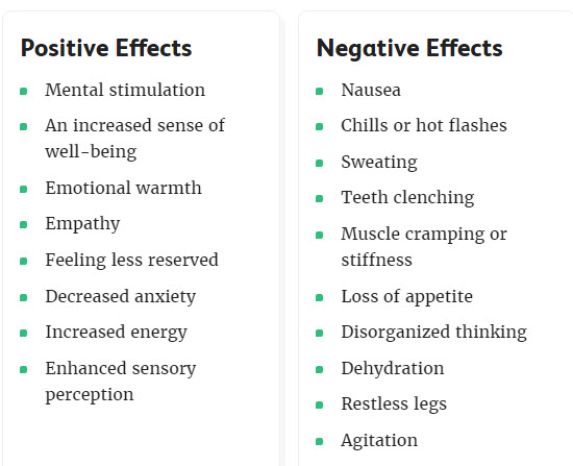
Magic mushrooms
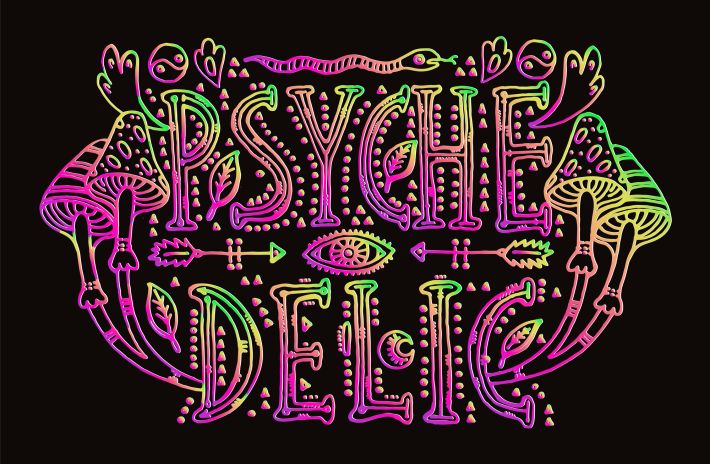
And right behind MDMA in the line for FDA approval is psilocybin, a class A drug, for Medicinal therapy for treatment-resistant depression.
Psilocybin is the active ingredient in what are commonly referred to as magic mushrooms.
Clinical trial on single dose psilocybin in treatment-resistant depression
New England Journal of Medicine (N Engl J Med 2022; 387:1637-1648) November 3, 2022 for Educational purposes only.
The highest dose (25 mg), resulted in significantly lower levels of depressive symptoms after 3 weeks. A few individuals in each group reported suicidal intent or self-injurious behaviour. Those deemed to be a significant risk for suicide during the initial screening for selection into the trail were excluded.
Therapeutic sessions of 6 to 8 hours’ duration were conducted in a non-clinical, calming living-room environment, with participants listening to a specially designed music playlist and isolated by eye shades and earphones to help direct attention internally.
There’s something about the psychedelic experience that leads to a rapid resolution of depression symptoms, said James Rucker, a consultant psychiatrist at King’s College London who worked on the trial.
There was some criticism on ethnicity within that study. It’s important to remember that not all depressed people are exactly the same, as each individual person experiences depression differently depending on many factors such as personal life experience and physical conditioning.
This holds true for individuals from different ethnic backgrounds as well—studies have found that certain racial/ethnic communities face more difficulties when it comes to battling depression than others do. Differences between groups may arise due to various factors, including cultural norms and access to mental health care providers with expertise in particular cultures.
The trail was a single dose of psilocybin, but some adverse reactions to this were recognised. It was encouraging to observe an improvement in this population who were considered non-responsive to previous treatment, albeit at the strongest therapeutic dose. They cannot claim this will be some silver bullet, but it does facilitate a route and need for more clinical studies.
Having said that, there have been 180 clinical trials of psilocybin, MDMA (3,4-methylenedioxymethamphetamine), or LSD, attempting to treat psychiatric disorders (https://clinicaltrials.gov/).
Two double-blind crossover studies showed that psilocybin produced substantial and enduring decreases in symptoms of anxiety and depression among patients with a life-threatening cancer diagnosis.
In an online survey on psilocybin mushroom, approximately, 40% rated it to be among the most challenging experiences of their lifetime, putting themselves or others at risk of physical harm, aggression or violent behaviour. Then requiring medical help, or seeking treatment for a perpetual psychological symptom. However, most of them had endorsed the experience. When administered under supportive conditions, psilocybin occasioned experiences similar to spontaneously occurring mystical experiences.
Healthy individuals may experience a ‘bad trip’, a negative reaction to psychedelic use, such as confusion, agitation, severe paranoia, or anxiety. In some cases, psychedelics have been linked to the onset of prolonged psychosis, and some users experience a feeling of being disconnected from reality.
Individuals under the effects of these substances can experience distressing effects, such as frightening hallucinations, or troubling thoughts or feelings. Since psychedelics often intensify emotional experiences, this can lead to erratic behaviour. In therapy, individuals should be properly prepared, monitored, and receive appropriate care throughout the process.
Such statements shouldn't be surprising because previous psilocybin administration studies have repeatedly shown that participants frequently rate their psychedelic experiences as among the most meaningful of their entire lives, and they are sometimes compared to the birth of a firstborn child or death of a parent.
Nevertheless, interest in this field is likely to remain high, particularly because the development of antidepressants targeting the “hallucinogenic” serotonin receptor without eliciting any hallucinations may be achievable in the future.
Activation of the serotonergic receptors influences mood and behaviour. Whereas, Other types of drugs, like alcohol, primarily act on dopaminergic receptors, which impact the reward system in the brain.
It is also worth noting the dopamine hypothesis of schizophrenia involvement came in the 1970s, with observations that the clinical effectiveness of antipsychotic drugs was directly related to their affinity for the dopamine receptor.
This begs the question, does the psychedelic experience reinforce the message or therapy being conveyed?
USA Clinical studies on psychedelic therapy program for alcoholism
Australia clinical trials (psilocybin) on depression
In March 2021, the Australian government announced it would provide $15 million for clinical trials to explore the use of psychedelics to augment and enable psychotherapy to be more effective.
Michael Taylor participated in a psychedelic drug trial and said the experience was one of the most profound of his life. He is in his late 40s, never even smoked or taken recreational drugs in his life.
Taylor is the antithesis of the consciousness-expanding trippy hippies immortalised in Tom Wolfe’s The Electric Kool-Aid Acid Test.
Lysergic acid diethylamide (LSD)
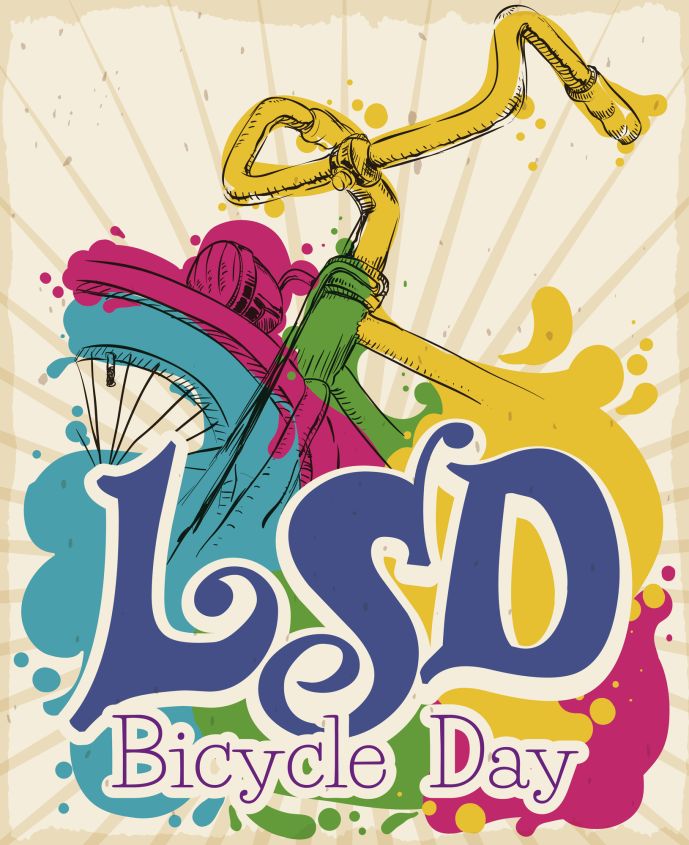
Lysergic acid diethylamide (LSD), also known colloquially as acid, is a potent psychedelic drug. Effects typically include intensified thoughts, emotions, and sensory perception.
Bicycle Day is 19 April 1943, When Albert Hofmann, intentionally took LSD but, fearing he had made himself ill, pedalled home from his lab to a place of safety while experiencing the full effects of LSD for the first time—making this the first-ever acid trip.
He then wrote about his experiments and experience on 22 April, which was later put into his book LSD: My Problem Child. This account is monumentalise annually with parades, parties, and day-glow cycle rides through cities around the World.
Beyond the psychedelic subculture, it’s become one of the best-known ‘eureka moments’ in the history of science.
The drug showed promise in treating psychiatric disorders shortly after its discovery in the 1940s.
Even Apple co-founder Steve Jobs described taking LSD as one of the most profound experiences of his life.
Birth of micro-dosing
A 43-year-old professional who worked in the book industry, started taking tiny amounts of LSD most mornings for four months.
Although the doses of the illicit substance were too small to induce hallucinogenic trips, Christina claims it had a significant impact on her anxiety, concentration and experience of life.
Her curiosity was piqued after reading about “microdosing” – a term popularised by the 2011 book The Psychedelic Explorer's Guide by James Fadiman.
Microdosing is a different way of consuming psychedelic drugs, such as LSD and magic mushrooms, which involves regularly taking small amounts of a psychedelic drug (typically 5-10 per cent of a full recreational dose).
In 2015 Rolling Stone magazine breathlessly reported that microdosing acid – another term for LSD – had become the “creativity enhancer of choice” for tech start-up workers in San Francisco.
KRON News footage from October 28th 1964, featuring brief scenes from a press conference by Timothy Leary & Richard Alpert about their use and study of the hallucinogenic drug LSD.
In 1960, two promising young psychologists at Harvard, Timothy Leary and Richard Alpert, began exploring psychotropic substances' effects on the human mind.
However, by 1962, the faculty at Harvard were concerned about their unorthodox methodology being used on their human guinea pigs. During an investigation into the safety and procedures, both were found to be under the influence of psilocybin and expelled from academia.
This wasn’t only based on their cavalier attitude towards psychotropic research, but actively promoting their recreational use.
Both become icons of the psychedelic drug, counterculture, and human potential movement. Leary became famous for the slogan “Tune in, Turn On, Drop Out”: Alpert, under the pen name of Baba Ram Dass, translates into a servant of god and in 1970, he wrote a popular book called Be Here Now, described as a “modern spiritual classic.”
War on drugs
The 1960s and early 1970s were a period of substantial domestic turmoil. Social movements focused on ending racism, poverty, and the war in Vietnam. Drugs became symbols of youthful rebellion, social upheaval, and political dissent, and the government halted scientific research to evaluate their medical safety and efficacy.
Nutty propaganda ensued with outrageous stories in the press, radio and TV news coverage with very little truth. So much has been written about the sixties, sometimes it's hard to tell myth from reality. Even in that period, we still had fake news.
Such examples are shown below:
Did a Man Who Used LSD Believe Himself to be a Glass of Orange Juice?
Halting the spread of LSD had become part of the national agenda; therefore, the press needed to sensationalise the subject ... the LSD psychotic had seized the public imagination and didn’t let go for the rest of the decade.
Barely a week went by that this curious creature wasn’t in the news columns, either raping or murdering or committing suicide in stories that were usually anonymous, uncheckable, and eerie.
Early versions of this legend attributed the patient’s bizarre behaviour to the damage caused by repeated LSD use. Still, later versions described the cause as a single accidental, massive dose of acid.
In some versions, the victim believes himself to be orange (rather than a glass of orange juice), although he may also harbour fears that he will turn into orange juice if anyone touches him.
The patient is sometimes said to be afraid to lie down (lest he spills) go to sleep (because someone might drink him), or allow anyone to approach him (for fear he might be peeled).
This tale was widely cited in the 1960s and 1970s as a “true story” illustrating the dangers of illicit drug use.
Include, stuffing babies in ovens or jumping out windows thinking that they could fly. This legend served as a chilling (albeit fictitious) account of the damage LSD could wreak on a human being. Physical trauma may be terrible, but at least it’s comprehensible. Bizarre and permanent insanity, however, is one of the most horrible fates we can contemplate.
A couple leaves their infant in charge of a teenage, hippie-type girl while they go out on the town for the evening.
When the mother phones home a few hours later to check up on things, the babysitter informs her that everything is fine and that she has put the turkey in the oven.
A few moments later, the couple recalls that they left no turkey at home; they rush home and find that the babysitter, high on LSD, has cooked their baby in the oven.
The urban legend probably circulated as a cautionary tale about the dangers of leaving children in the care of strangers before incorporating an additional warning against drug use in the 1960s.
Brunvand, for example, cites a version collected by folklorist Lydia Fish in which drugs play no part.
Cannabis (Marijuana)

Cannabis is a commonly used recreational drug, which contains the principal psychoactive component delta 9-tetrahydrocannabinol (THC). Cannabis is of extraordinary cultural importance as it is the most commonly used illicit drug worldwide and ranks on the third place of recreational drugs behind alcohol and tobacco.
Cannabis use also has a therapeutic tool due to its antiemetic and appetite-enhancing effects, that is why it is sometimes used as a treatment for oncological patients suffering from nausea, vomiting, and loss of appetite during or after chemotherapy.
Some preparations of cannabis are now recognised as medicines after families of children with severe forms of epilepsy said it could help to control seizures.
The prescription medication is approved for treating seizures associated with two rare and severe forms of epilepsy (Lennox-Gastaut syndrome and Dravet syndrome) as well as seizures associated with a rare genetic disorder called tuberous sclerosis complex.
Is marijuana the same thing as cannabis?
People often use the words “cannabis” and “marijuana” interchangeably, but they don’t mean exactly the same thing.
The word “cannabis” refers to all products derived from the plant Cannabis sativa of which marijuana and hemp are two varieties.
Marijuana, which can also be called cannabis, and a street name like weed, pot, or dope, refers to the dried flowers, leaves, stems, and seeds of the cannabis plant. The word “marijuana” refers to parts of or products from the Cannabis sativaplant. Cannabis is the genus, while marijuana is the species.
Airhead (marijuana user)
The cannabis plant contains more than 100 compounds (or cannabinoids). These compounds include 9-tetrahydrocannabinol (delta-9-THC). THC is the substance that’s primarily responsible for the high effects of marijuana on a person’s mental state. Some cannabis plants contain very little THC. Under U.S. law, these plants are considered “industrial hemp” rather than marijuana.
The Cannabis genus of plants contains varieties of both hemp and marijuana species. Although they belong to the same genus, these two plant species are incredibly different. In other words, all marijuana is cannabis, but not all cannabis is marijuana.
When it comes to hemp vs. marijuana, the two have very different applications. Marijuana is the only plant containing the higher percentage of the principal psychoactive component delta 9-tetrahydrocannabinol (delta-9-THC), which is the cannabinoid responsible for getting you “high.”
A previous UK survey suggests that people with Huntington’s disease are most likely to take cannabis to help to manage their condition, with more than two fifths of patients saying they do. Nearly a third of people with Parkinson’s disease and a fifth of people with MS also say they use the drug illegally to alleviate their symptoms.
Over the past few years, you may have seen headlines about a drug called delta-8, a form of THC, derived from hemp that resulted in thousands of accidental poisonings. There is an alarming lack of safety standards and false marketing concerning this product. Because the drug is unregulated, the vast majority of delta-8 products on the market can be contaminated with other cannabinoids and heavy metals, including lead and mercury. As a result, many experts advise against its use.
For example, a recent poisoning case in Roanoke where a 2-year-old was hospitalised after eating a delta-8 product resembling Apple Jacks cereal.
The most common form of THC in cannabis plants is delta-9-THC, which is almost identical to delta-8-THC in its chemical structure. The molecules’ similarity means that delta-8 and delta-9 act very similarly in the body. Most crucially, they both bind to the same receptors in the brain, particularly one called the cannabinoid type 1 (or CB1) receptor, which produces the high you experience when you smoke a joint or eat a weed gummy.
Consuming large quantities of delta-8 or contaminants, like unlabelled delta-9. THC can cause chronic vomiting, psychosis and addiction when used at high concentrations.
Jessica Kruger, assistant professor of health behaviour at the University at Buffalo, who remarked how they could use delta-8 and still be productive, whereas when they use delta-9 they would say that they had things like ‘couch lock’ or didn’t feel like getting up and doing anything.
Legal status
The purportedly milder high is one of delta-8’s main attractions for users. The other is its legal status. Delta-8’s rise started with the passing of the 2018 Farm Bill, which made hemp legal. Hemp and marijuana are both types of cannabis plants, but marijuana produces delta-9-THC and hemp doesn’t.
Hemp is a botanical variety of the cannabis plant too and that can be puzzling for some to understand the difference, often grown for their stalk and fibre rather than the flower. The main difference between hemp and other strains of cannabis such as marijuana is that there is a very low percentage of THC active compound, if any in hemp, it is required to stay below 0.3% THC to remain legal.
Therefore, hemp is not normally used as a recreational drug. Recreational Cannabis contains up to 50 per cent THC. Rather, hemp is only grown for its fibre, and seeds and for industrial purposes, such as in the manufacturing of paper or clothing. It can also be used as a food product.
Many people value hemp as a health food supplement. In addition to CBD, it contains minerals, as well as vitamins A, C, E, and beta-carotene. It’s also a good source of protein, carbs, and fibre, in addition to healthy omega-6 and omega-3 fatty acids.
Hempcrete is a material commonly used in what The New York Times has referred to as “cannabis construction” – construction that uses earth-friendly materials derived from industrial hemp.
Cannabidiol (CBD) Family
Other active compounds, such as cannabidiol, is not impairing, meaning it does not cause a “high” and used for its natural anti-inflammatory properties. There’s no doubt that CBD has become quite popular and has generated a new wellness industry.
CBD-based medications are approved as painkillers in the U.S. Epidiolex, which contains a purified form of CBD that does not make users high is used for rare forms of epilepsy, and the only CBD treatment approved by the Food and Drug Administration (FDA) USA and Home Office in southern England.
Several countries have approved CBD to treat certain conditions. For instance, the U.K. approved it for multiple sclerosis, and Canada approved it for cancer pain. Ongoing research suggests CBD oil for pain can aid medical conditions, including arthritis and fibromyalgia, at varying doses.
A private Medical Clinic in Scotland, UK, has over one thousand six hundred people being prescribed medical cannabis to treat conditions including epilepsy, anxiety and chronic pain. In contrast to the stereotypical image of young cannabis users, their patient’s average age is 45.
For example, Carol Munro, a former gymnast from Edinburgh, suffered disc pain and was on an extremely high dose of morphine for the best part of 15 years. This new treatment has apparently changed her life.
Some pain may not be treatable by CBD alone, but it can help when paired with THC or Western medication applications.
Just to recap, THC is responsible for the “high” that many people associate with cannabis, while cannabidiol (CBD) is a non-intoxicating, non-euphoric component, which you may have seen in the form of oils, gummies, drinks and other products for medical purposes.
Tetrahydrocannabivarin (THCV) might not have intoxicating effects linked to THC, despite having those all-familiar three letters in its name. While most people associate cannabis with increasing appetite, THCV might have the opposite effect.
There is much interest in THCV as an appetite suppressant and a treatment for weight loss and diabetes. For this reason, THCV has been nicknamed “diet weed”.
Sativa cannabis strains
- Jack Herer
- Durban Poison
- Sour Diesel
- Green Crack
- Super Silver Haze
- Moby Dick
- Strawberry Cough
- Blue Dream
The high and lows of tetrahydrocannabinol (THC)
Cannabis ruderalis originated in Central Asia, with genetic similarities to the cannabis sativa. It is believed to be somewhere between the sativa and indica strains, but still regarded as a cannabis subspecies and therefore, regulated as such.
Cannabis ruderalis contains more Cannabidiol (CBD) than marijuana and Hemp, with a lower tetrahydrocannabinol (THC) level at 3%.
Highest THC strains
Grease Monkey: THC levels of around 27%-31%.
99 Problems: THC content of around 28%-30% and very low CBD content (<1%).
Ghost Train Haze: THC content of around 28%.
Bruce Banner: THC content of around 27%-29%.
Strawberry Banana: With 25% THC
Ghost OG: THC levels, an average of 29%
Wedding Cake: THC levels, an average of 25%,
What Is Couch Lock
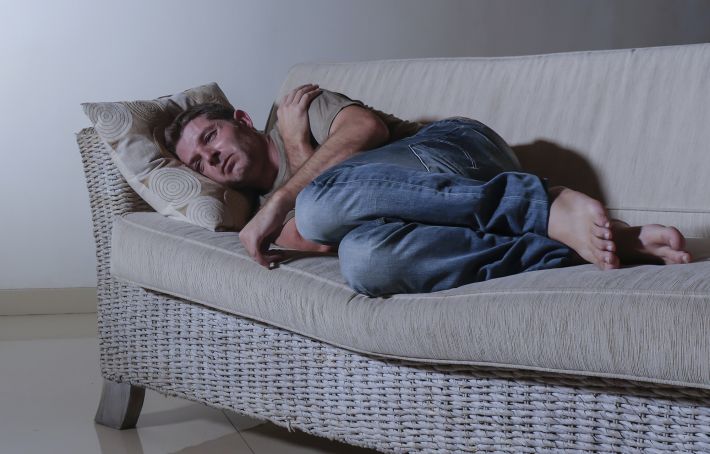
Couch lock is the colloquial term for the overwhelming sedation and deep relaxation often experienced after consuming cannabis.
After smoking or ingesting a large amount of cannabis – in particular, strains (cultivars) containing high amounts of myrcene for its sedating effect – that makes you feel as if you are locked to your chair and unable to function is called “couch lock.”
Herbal medicines containing myrcene have a long history of being used as a sleep aid in folk medicine. In Mexico, myrcene-rich lemongrass infused tea has been used in as a sedative and muscle relaxant.
Couch lock is typically caused by indica strains, known for their higher THC. Some hybrids strain that contribute to a couch-lock effect include Northern Lights, Pure Kush, Strawnana, OG Kush, and Hindu Kush, among others.
How is marijuana consumed?
Although marijuana is usually rolled up and smoked in joints like a cigarette or cigar (Reefer), or in bongs (pipes or water pipes) Made into edible products like cookies or brownies, it can also be brewed as a tea or infused into other beverages, including alcohol.
Consuming edibles or products with high THC concentration can have delayed or unpredictable effects and increases the risk of overdose or poisoning.
Children can mistake edibles for regular food or candy. Consuming marijuana can make children very sick. Since marijuana use has been legalised in some USA states, unintentional poisonings in children have increased, with some instances requiring emergency medical care.
Some users also “vape” marijuana, which refers to the breathing in of dried cannabis vapours through a vaporizer or vaping device.
Additionally, some people inhale the oil concentrates and other extracts from the cannabis plant—this is known as dabbing.
THC oils and concentrates used in vaping and dabbing often involve using highly concentrated forms of THC and may contain additives or be contaminated with other substances that may be harmful. By steeping the cannabis in olive oil to make it easier, to be applied externally, for example to treat shingles.
Brain function
Marijuana use directly affects brain function—specifically the parts of the brain responsible for memory, learning, attention, decision-making, coordination, emotions, and reaction time. Developing brains, such as those in babies, children, and teenagers, are especially susceptible to the harmful effects of marijuana and THC.
Benefits of cannabis on the ageing adult brain
Scientists in Colorado used functional neuroimaging to assess how regular cannabis use (at least once per week) in adults over 60 years of age altered the potency of communication between several brain regions that normally declines with age.
They found that older adults who regularly used cannabis had stronger communication patterns between three brain regions—the hippocampus, the parahippocampal gyrus, and the cerebellum—compared to non-cannabis using older adults.
Laced drugs
Some individuals consider that marijuana is a gateway to a stronger, addictive drug. Periodically, marijuana is combined with other drugs to obtain a certain high.
Marijuana laced with some sort of narcotic:
- Amp Joint
- Dust
- Dusting
Marijuana and heroin:
- Atom Bomb
- A-Bomb
- Canade
Cannabis: Highlights from Global Drug Survey, 2014
Cannabinoid Hyperemesis Syndrome
Cannabinoid hyperemesis syndrome (CHS) is a rare condition in which an individual experiences cyclical nausea, vomiting, and abdominal pain after using cannabis.
It has a delay in onset and is hence mostly observed in subjects who have been consuming large doses of cannabis over a period of several years. The syndrome can lead to complications like metabolic alkalosis, hypokalemia, acute kidney injury, or injuries of the oesophagus.
It is important to recognise conditions that are associated with cannabis use, and visits to the emergency department for persistent nausea and cyclic vomiting nearly doubled in 2016 and is also associated with several short- and long-term side effects such as changes in mood, impaired memory, impaired attention, depression, and anxiety, and it is correlated with schizophrenia.
The relief of the abdominal pain, nausea, and vomiting with hot showers can be secondary to the vasodilation of the skin, causing a redistribution from the gut. This theorised mechanism has been referred to as the cutaneous steal.
Finally, for this section, does anybody know if it is 4:20 yet. More importantly, does anybody appreciate the significance of that remark.
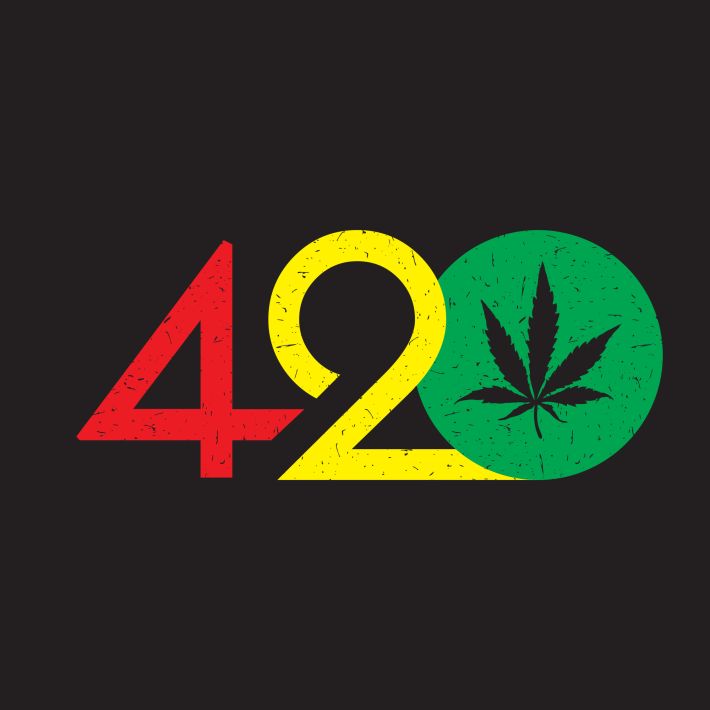
You have to kiss a lot of toads to find a prince
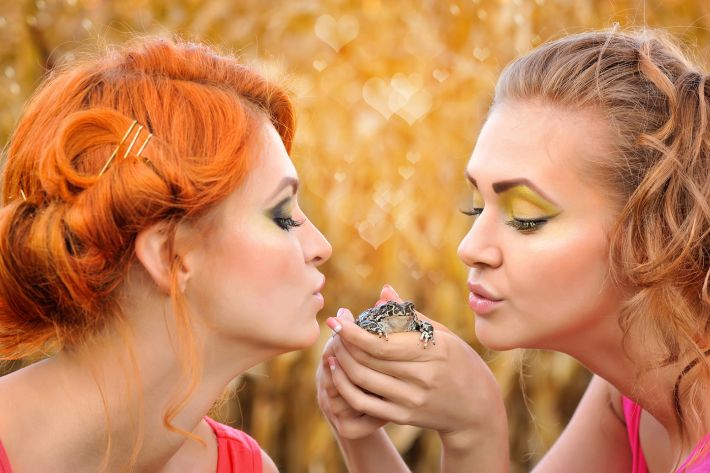
In this case, the hallucinogenic prince is the Colorado River toad, or Bufo alvarius with other species being the largest native toad in the United States is the Sonoran Desert Toad. Its princessy talent is discharging a whitish substance Bufotenin that contains a compound called 5-MeO-DMT, a psychedelic tryptamine that is related to the more well-known compound DMT, and prominent in the mind-altering psychedelic brew ayahuasca.
The 5-MeO-DMT has previously been shown to stimulate neuronal growth and development. When dried and smoked, this unusual toad gunge is reported to generate a short yet earth-shattering psychedelic experience.
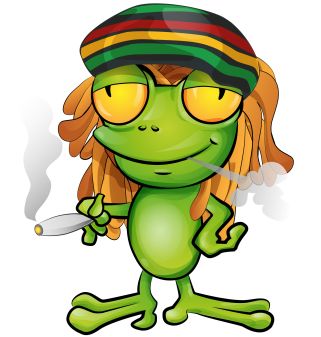
The 5-MeO-DMT has previously been shown to stimulate neuronal growth and development. When dried and smoked, this unusual toad gunge is reported to generate a short yet earth-shattering psychedelic experience.
A previous study on smoking toad milk on 42 participants. Publishing their findings in the journal Psychopharmacology.
The authors report that average depression ratings were down by 18 per cent one day after inhaling the substance, while anxiety was reduced by 39 per cent and stress by 27 per cent. A follow-up analysis four weeks later found that depression ratings had dropped to 68 per cent below baseline levels, while anxiety and stress were down 56 per cent and 48 per cent, respectively.
Prominent figures including former boxing champion Mike Tyson, comedian Chelsea Handler and President Biden’s son Hunter Biden have publicly discussed 5-MeO-DMT therapy or toad-venom rituals.
The U.S. government has an unusual request: Please don’t lick psychedelic toads. The National Park Service issued a warning this week to visitors to refrain from licking the large Sonoran Desert toad as they try to reach a state of hallucinogenic enlightenment from the “potent toxin” that the amphibians naturally secrete.
The toad’s toxins can be very dangerous for animals, and the toxins emitted by one toad can be enough to kill a fully grown dog. Humans have exploited this harmful toxin as a psychedelic. It is illegal to have the poison from the toad, called bufotenin, in your possession in the state of California.
Search for spirituality
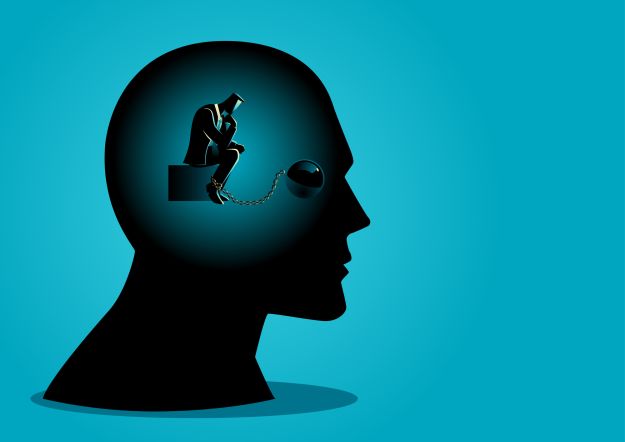
Ayahuasca
It wasn’t until 1908 that a British botanist, Richard Spruce, was the first to study it. He was mainly interested in classifying the vines and leaves that made up the magic brew, and in understanding its role in Amazonian culture.
Beat Generation
The Beat Generation was, in a certain respect, a literary movement who published stories during a certain time frame in history, on a particular themes and with a specific style.
It was popularised in the 1950s, which morphed into the hippies of the 1960s. They often approached drugs experimentally, initially being unfamiliar with their effects. Their drug use was broadly inspired by intellectual interest, and many Beat writers thought that their drug experiences enhanced creativity, insight, or productivity.
One of the key beliefs and practices of the Beat Generation was free love and sexual liberation, which strayed from the Christian ideals of American culture at the time. Some Beat writers were openly gay or bisexual, including two of the most prominent were Ginsberg and Burroughs.
Then, ayahuasca emerged again in the early 1960s with the hippy movement. William Burroughs, described their experiences with ayahuasca, most famously, in a book The Yage Letters after going to South America a decade earlier to research and experience the drug first-hand.
Much of Burroughs's work is semi-autobiographical, primarily drawn from his experiences as a heroin addict, as he lived throughout Mexico City, London, Paris and Tangier in Morocco, as well as from his travels in the South American Amazon.
Incidentally, Burroughs shot his second wife, Joan Vollmer, in September 1951 in Mexico City, and was consequently convicted of manslaughter. Finding literary success with his confessional first novel, Junkie (1953), Burroughs is perhaps best known for his third novel Naked Lunch (1959), The highly controversial work that underwent a court case under the U.S. sodomy laws.
The Witches Brew
Ayahuasca is extracted by boiling the leaves of the Psychotria Viridis bush and the bark of the Banisteriopsis caapi vine for its psychoactive properties. Indigenous shamans initially used it to engage with the supernatural, including communicating with the spirits of the dead, healing, and religious rituals across several South American countries.
Ayahuasca has been incorporated into folk medicine and spiritual healing, and several Brazilian churches use it routinely to foster a spiritual experience. More recently, it has been used in Europe and North America for religious, healing, and recreational purposes.
Many years of shamanic wisdom have indicated potential therapeutic uses for ayahuasca, and several present day studies suggest that it may be useful for treating various psychiatric disorders and addictions. The side effect profile appears to be relatively mild, but more detailed studies need to be done.
Preliminary research has provided encouraging results investigating ayahuasca's therapeutic potential, especially regarding its antidepressant effects.
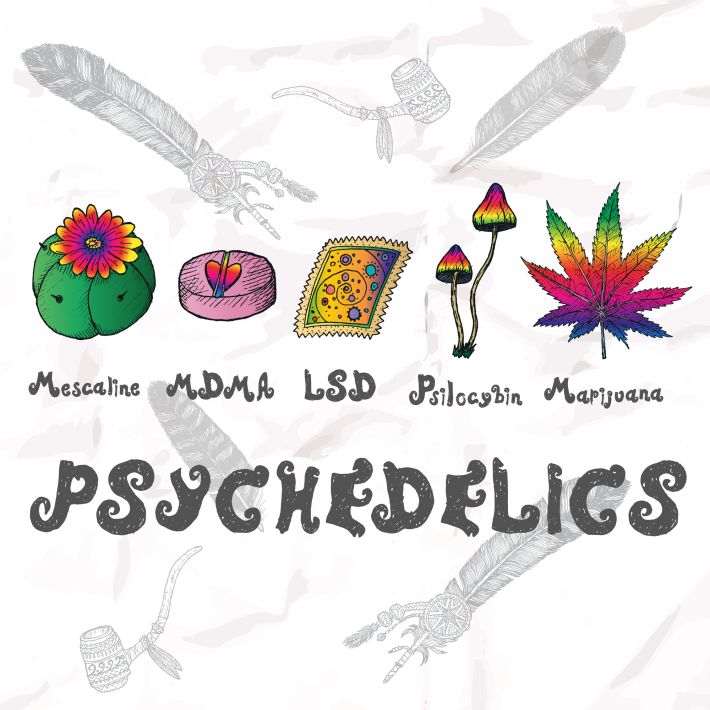
mescaline
From the earliest recorded time, peyote has been used by indigenous peoples in Northern Mexico and the Southwestern United States as a part of their religious rites. Mescaline can be extracted from peyote or produced synthetically.
Mescaline is a naturally occurring phenylethylamine usually consumed in the form of peyote buttons, which are derived from the small, blue-green cacti Lophophora williamsii and Lophophora diffusa.
They grow in the deserts of the southwestern United States and Mexico.
Peyote has been used in religious ceremonies for 8000 years. Mescaline is also contained in the San Pedro cactus (Trichocereus pachanoi) of South America and is used ritualistically by Andean, Native American.
These cacti contain many other alkaloids, some of which are also psychoactive. The use of peyote is legal for members of the Native American Church in some states.
Adverse reactions (e.g. panic attacks) to peyote are rare in structured religious use.
Nausea and vomiting are pronounced and almost always precede the hallucinogenic effects, which is an important aspect of the cleansing spiritual ritual. The hallucinations are now thought to be caused mainly by mescaline binding to and activating serotonin receptors in the brain.
What is its effect on the body?
Following the consumption of peyote and mescaline
users may experience:
- Intense nausea vomiting
- dilation of the pupils
- increased heart rate
- increased blood pressure
- a rise in body temperature that causes heavy perspiration
- headaches
- muscle weakness
- impaired motor coordination
What are common street names? Common street names include:
- Buttons
- Cactus
- Mesc
- Peyoto
What is its legal status in the United States?
Peyote and mescaline are Schedule I substances under the Controlled Substances Act, meaning that they have a high potential for abuse, are not currently accepted for medical use or treatment in the United States, and a lack of accepted safety for use under medical supervision.
In New York City, pharmacologists Alwyn Knauer and William Maloney carried out a more extensive trial, on 23 people, in 1913. They hoped that mescaline, as a hallucinogen, might provide insight into the psychotic phenomena associated with schizophrenia.
However, in a later study, people with schizophrenia could easily tell the difference between their own hallucinations and those induced by the drug.
In 1953, Aldous Huxley took four-tenths of a gram of mescaline, sat down and waited to see what would happen. When he opened his eyes, everything, from the flowers in a vase to the creases in his trousers, was transformed.
Huxley described his experience with breathtaking immediacy in a publication called, The Doors of Perception. In its sequel, Heaven and Hell, he goes on to explore the history and nature of mysticism. Still bristling with a sense of excitement and discovery, these illuminating and influential writings remain the most fascinating account of the visionary experience ever written.
Frederick Smith, who in 1914 became head of the Reorganised Church of Jesus Christ of Latter-Day Saints, now known as the Community of Christ. Once promoted the use of peyote during his services, to induce the religious ecstasy he said he had experienced at ceremonies of various Native American nations.

Ken Kesey, fuelled by the psychedelic drug LSD and peyote derived from cactuses, wrote One Flew Over the Cuckoo’s Nest. The 1962 published book was based on his experiences at a war veterans’ mental hospital in California, where, in 1959, he became a paid volunteer in experiments with mind-altering drugs.
During the Second World War, mescaline saw use in the infamous human experimentation programme of the Third Reich. Nazi physician Kurt Plötner forced concentration-camp prisoners to take mescaline to see whether it would serve as a ‘truth serum’ during interrogation.
The US Office of Strategic Services, being the forerunner of the Central Intelligence Agency (CIA), was testing mescaline as a ‘truth drug’ around the same time. The CIA later recruited Plötner for a project that evolved into the mind-control programme MK Ultra.
The Netflix series, Wormwood, reignited mainstream attention on the horrors of the government-funded mind control program of the 1950s and ‘60s that used experimental brainwashing techniques on the public.
One extreme case described by the late Boston crime boss James “Whitey” Bulger who, while incarcerated in an Atlanta penitentiary in 1957, was forcibly injected with LSD as part of the United States’ Central Intelligence Agency’s now infamous behaviour control experiments. He experienced horrible periods of living nightmares and even blood coming out of the walls.
Other experiments, conducted at the Edgewood Arsenal in Maryland, are the focus of the new documentary Dr. Delirium and The Edgewood Experiments.
Edgewood experiments also included 3-quinuclidinyl benzilate (BZ), a potent concoction that would keep subjects in a state of nightmarish delirium for up to three days. BZ ID code EA2277 agent and was standardised for use in chemical munitions in 1961.
BZ is regarded as an anticholinergic drugs can cause vivid and sometimes strange hallucinations, and in some, psychotic episodes leading to their misuse. Plants containing atropine and related substances were used in witches’ brews in the Middle Ages to conjure up the devil.
Summer of love
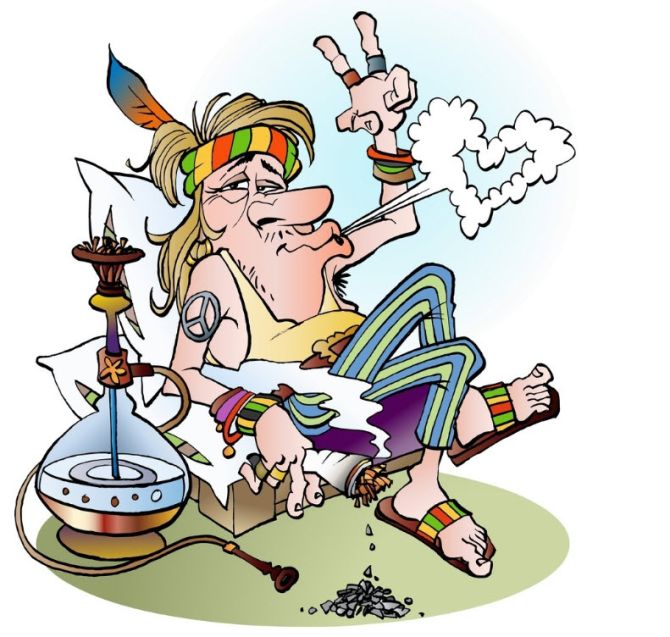
The Monterey Pop Festival from 16 June to 18 June 1967 introduced the rock music of the counterculture to a wide audience and marked the start of the “Summer of Love”.
Scott McKenzie’s rendition of John Phillips’ song, “San Francisco”, became a hit in the United States and Europe.
The lyrics, “If you’re going to San Francisco, be sure to wear some flowers in your hair”.
This inspired thousands of young people from all over the World to travel to San Francisco, sometimes wearing flowers in their hair and distributing flowers to passers-by, earning them the name, “Flower Children”.
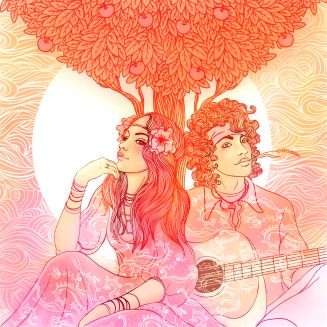
Counterculture
A group of people who do and believe things outside what society considers normal or typical can be called a counterculture.
A counterculture might organise itself around opposition to the Vietnam War during this period, anti-establishment during that period or unusual ideas about raising children, for example. It could be possible, they were rebelling from being submitted to an authoritarian parenting and cultural lifestyle from their parents.
It is also worth considering during that era, the end of the second world war with the atomic bomb which exploded in Hiroshima, twenty-two years earlier for them on 6 August 1945. Young people like today were concerned for their future, and planet. It wasn't the environment of global warming, but Nuclear Armageddon. The birth of CND, the Campaign for Nuclear Disarmament, for peace began and still continues today.
Previously in 1964 people were scared after the Cuban Missile Crisis and the assassination of President Kennedy.
Hippy generation

Hippie’s origins can be traced back to Greece, where philosophers like Epicurus popularised some of their principles.
Hippy is derived from the word “hippy” which was originally used for self-styled vagabonds or people who would prefer living an unconventional lifestyle without ties beyond their immediate family members. The hippie movement took off in San Francisco, with its first significant gathering in 1967 at the Woodstock music festival.
Since then, it has evolved into many different subcultures such as yuppies, yuppie punks or yuppie ravers while retaining its core values — peace, love and harmony —and tenets such as do your own thing, peace and love — do unto others as you would have them do to you — and dropping out of society or counterculture that rejects conventional values and institutions; according to the Urban Dictionary.
psychosis
Psychosis is often characterised by delusions or hallucinations, which are experiences that are far removed from reality.
Drugs that are frequently reported in cases of drug-induced psychosis, are when individuals are not taking the drug at the recommended dose or continuing to use the drug beyond the advised period of time, for example when ketamine is mimicking psychosis in the form of delusions and disordered thinking when abused.
Did you know that cannabis has been growing stronger and stronger over the years – a key reason why more people are ending up in hospital?
A surprising fact is that marijuana is now a 100 times stronger than substances found in the 1960s – they have much stronger tetrahydrocannabinols (THCs) – the main psychoactive part of cannabis. For this reason, we are seeing more cannabis-related hospital admissions due to its increasing strength.
Obviously, there are concerns with individuals attempting to self-medicate without the proper safeguards and knowledge in place.
There is a perception among individuals that cannabis is harmless. Experts say many interpret the Government’s decision to let doctors prescribe cannabis-based medicines as a green light to smoke it – even though the medicines and street drugs have hugely different effects.
People with a history of psychosis and a family history of schizophrenia should not take psychotropic drugs.
Let's give you an example of a 20-year-old man admitted into a psychiatric hospital that is attached to St George's Medical School, London. Sectioned under the mental health act, due to drug induced psychosis. Under interview, he was apparently a crew member of the Star Ship Enterprise.
He was a little anxious that he would be late for duty on the bridge. His dialogue was a mixture of gibberish and Klingon. Getting anything factual was difficult, and his father was able to fill in the blanks in English.
He previously had a small flat away from the family home to encourage independence and prevent him from returning home to roost. This young man has sold all his new furniture, including his bed, to feed his addiction. Unless he was returning to the stars, they had to refurnish this accommodation prior to his discharge after a month of treatment and hospitality. Then, supported by the community mental health team, he was able to return home to live long and prosper.
Psychedelic for Therapeutic Rx
Psychedelic drugs have immense therapeutic potential for treating mental health issues such as depression, Post-traumatic stress disorder (PTSD), and anxiety when administered under controlled conditions in healthcare settings by trained professionals and clinicians.
They offer an alternative approach to conventional treatments, such as psychotherapy or medications. They can result in profound personal growth experiences for those that use them responsibly and carefully within structured contexts such as therapy sessions or retreats, where guided support is available from qualified professionals.
Conclusion
Psychedelics are undergoing a major resurgence of interest in their potential medical benefits. There is some disagreement in the protocols and therapeutic framework to carry out such therapeutic therapies. There are some obvious barriers to overcome concerning FDA approval and the process of legalising or decriminalising of psychedelics but they are now gaining mainstream acceptance.
According to a new study published in PLOS One, there is no link between the use of psychedelic drugs—specifically LSD, psilocybin, mescaline, and peyote—and a range of mental health problems.
In fact, the study reports, psychedelic use is associated with a lower risk of mental health concerns like psychosis, anxiety disorders, mood disorders, and general psychological distress. It has also been suggested that psychedelics may have protective effects when it comes to mental illness, and the potential promise of psychedelics in helping to prevent suicide and this is of concern for those responsible for the safety and welfare of our veterans.
However, drugs such as cocaine, cannabis, and hallucinogens can also worsen symptoms of an existing mental illness. Whereas, psychedelics are thought to promote neuroplasticity, a rewiring of the brain that gives patients a fresh perspectives on their longstanding psychiatric issue.
A word of caution from the Priory’s hospital London, in regard to neuroplasticity and young adults, are particularly vulnerable to cannabis because of their early brain development, having the potential to produce long-term psychological effects and may also harm their long-term cognitive abilities in the future.
Children below the age of ten have been admitted to hospital after taking the powerful and addictive substance. Some people hooked on the drug have taken their own lives after suffering hallucinations, and many more are now unable to lead normal lives, according to doctors.
Many individuals assume psychedelics must be addictive, but most psychedelics have a lower addiction risk than other drugs due to their low levels of dopamine production in the brain when compared with addictive substances such as heroin, cocaine, or nicotine. However, at least one psychedelic, lysergic acid diethylamide (LSD), can cause tolerance.
This is one reason why many people prefer using them over other substances, and they don’t feel the same addictive craving or withdrawal with psychedelic use as they do with these more dangerous and addictive substances.
>
Reference / further reading
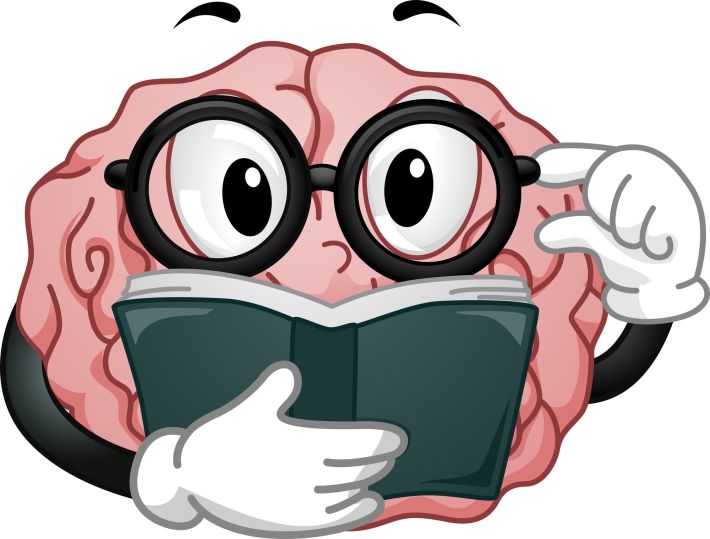
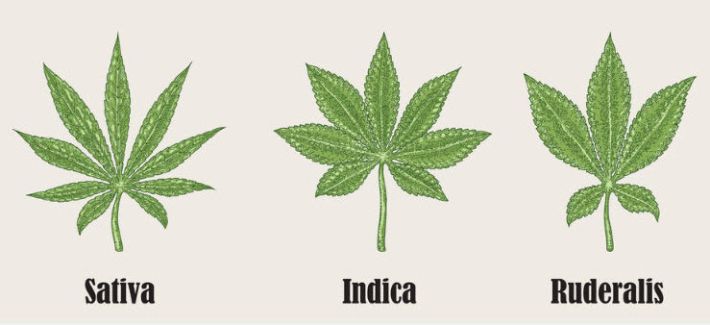
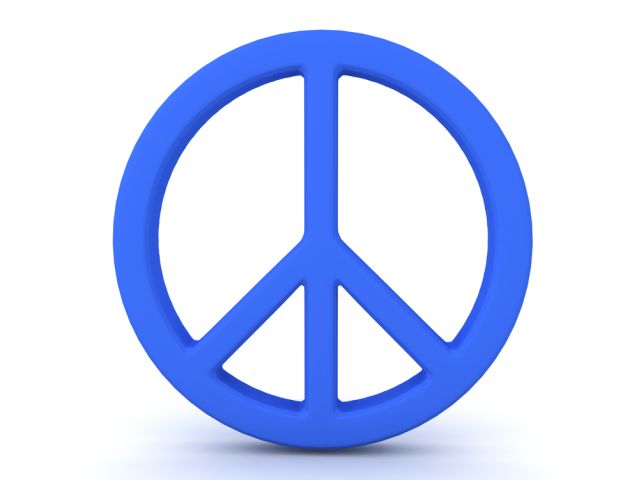




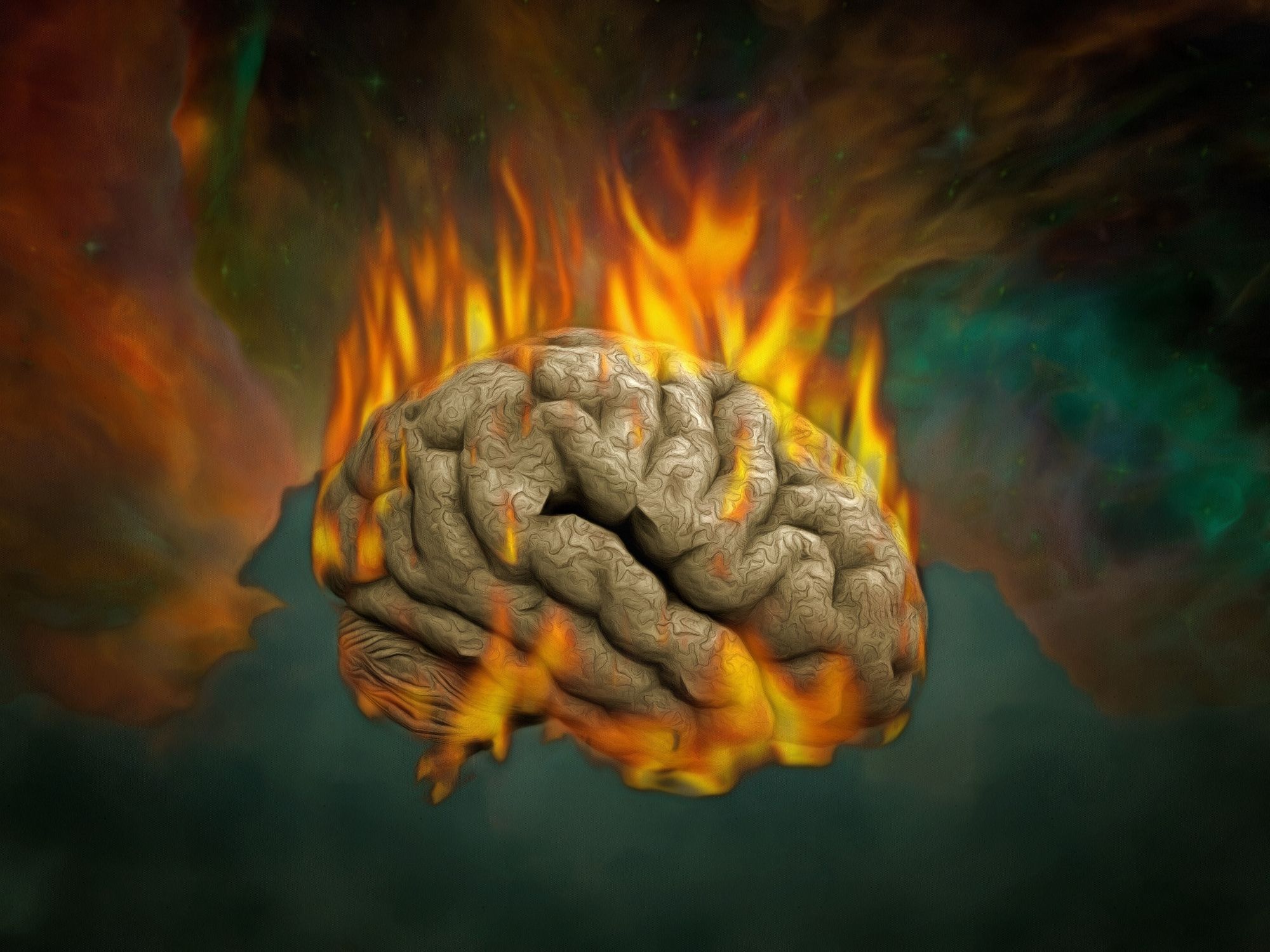










Thanks, I have recently been looking for info about this subject for a while and yours is the greatest I have discovered so far. However, what in regards to the bottom line? Are you certain in regards to the supply?